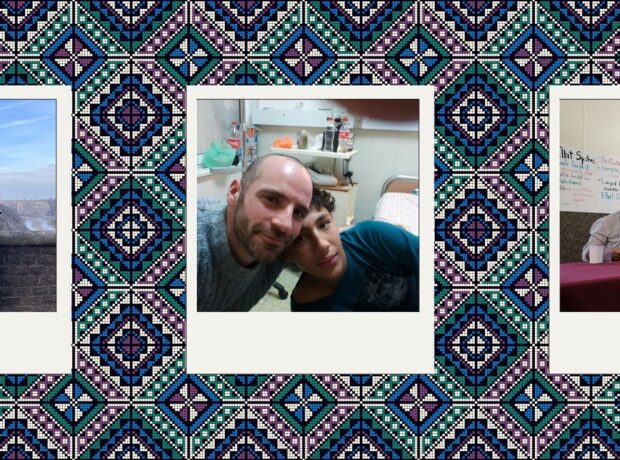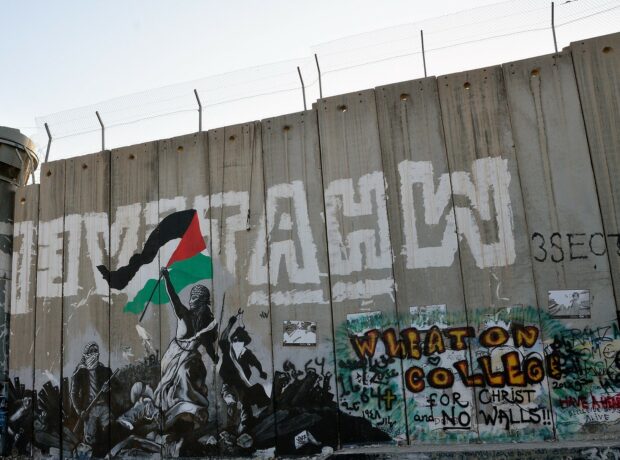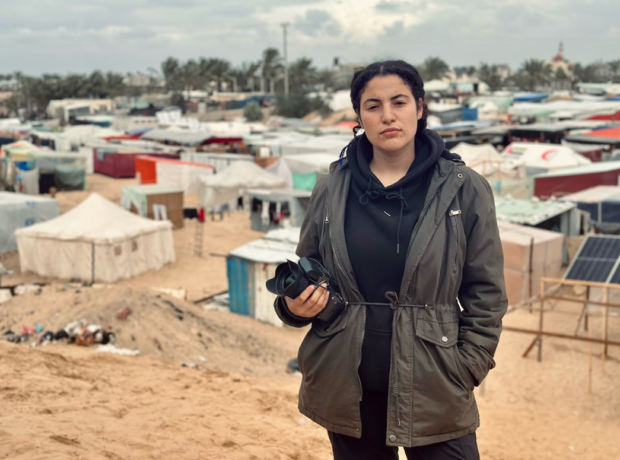In the Gaza Strip, Lorissa Rinehart finds swimming pools built from the rubble of war and swimmers whose Olympic dreams can’t be quashed.
All swimmers know the feeling: the weightlessness of water. The meditative rhythm: stroke, stroke, breathe. Away with land and gravity. Away with the world and all its worries.
Such everyday acts of transcendence are not generally associated with Gaza. Palestine’s thin stretch of Mediterranean coast would be one of the world’s most beautiful if it weren’t for the ravages of war, poverty and ongoing occupation. But it is these conditions that make the release of a long swim all the more important and powerful.
Or so think Amjad Tantish and Husein Moghat, two Gazans who against all odds have been teaching children to swim for over two decades. The roads that brought them to their shared mission converged in the wake of war.
Starting out as a coach in the mid-1990s, Moghat taught swimming in Israel’s public schools and lifeguarded at its pristine white sand beaches. Tantish, meanwhile, swam lap-after-lap at the University of Palestine’s pool where he worked with a single-minded clarity towards his goal of qualifying for the 1996 Centennial Olympics in Atlanta, Georgia. With his last touch in the Olympic trials, Tantish had Palestine’s fastest backstroke, but it wasn’t enough to qualify and he saw his dream disappear into the distance.
Then something else occurred that year that dramatically altered Moghat and Tantish’s lives and ambitions. The signing of the Second Oslo Accords fomented, if only for a short while, the Palestinian people’s right to self-determination as well as their right to self-governance in the West Bank and Gaza Strip. It was a time in which Tantish remembers: “Anything seemed possible.”
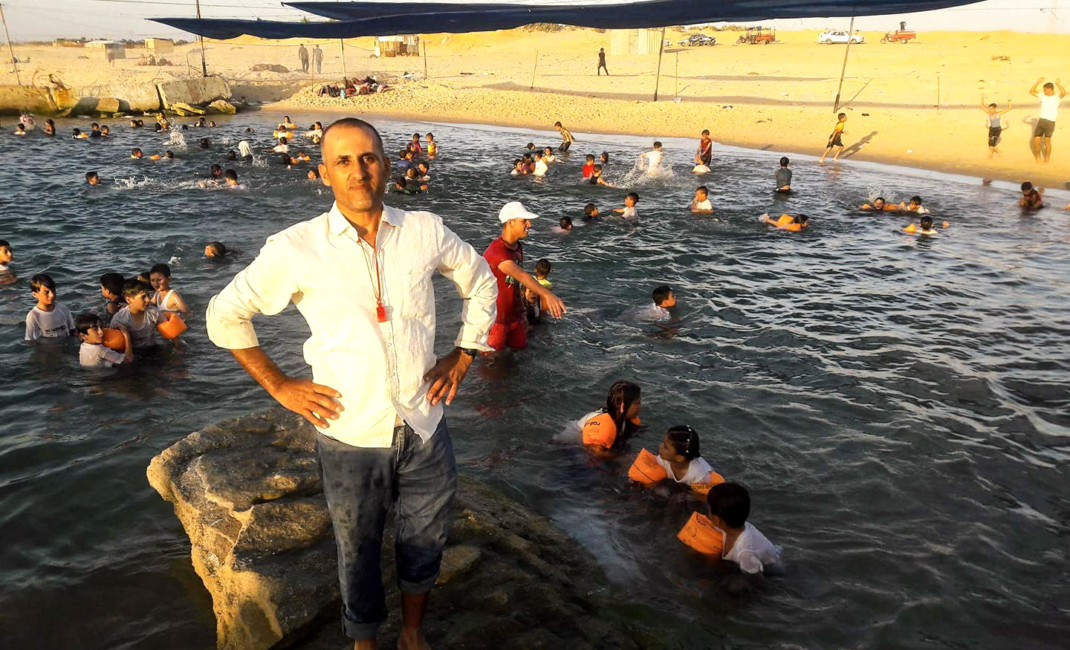
Swimming instructor Amjad Tantish at the pool he constructed, literally, out of the rubble of war – image by Monther Rasheed.
Moghat, feeling a renewed sense of hope and ambition, started taking courses to improve his skills as a swimming instructor and lifeguard. His dedication paid off and he had more work than ever while the border between Gaza and Israel remained opened. For his part, Tantish channeled his disappointment of not qualifying for the Olympics into an even loftier goal: to train the first ever Palestinian Olympic swimming team. In the clear blue waters of Gaza City’s port, he opened the territory’s first competitive swimming school with the express objective of competing on the world’s biggest stage.
His bold vision soon caught Gaza’s imagination. In less than a week, his school was filled to capacity with students diligently practising their strokes and working to shave that extra tenth of second from their kick-turns.
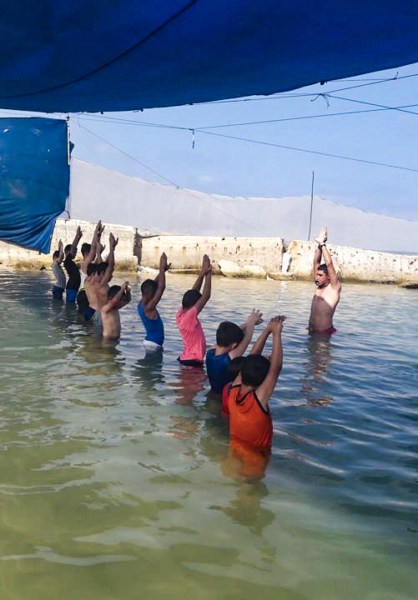
Young swimmers follow their instructor – image by Monther Rasheed.
But this moment in which the past could be forgotten in favour of a brighter future was short lived. In 2000, Prime Minister Ariel Sharon ascended the Temple Mount in Jerusalem, a holy site overseen by Muslims since the 12th Century.
Seen as deliberately provocative by many critics, the controversial piece of political theatre helped spark the Palestinian Second Intifada and the subsequent conflict that lasted from 2000 to 2004, claiming the lives of over 3,000 Palestinians and nearly 1,000 Israelis.
Tantish and Moghat’s worlds, like those of many Gazans, suddenly became much smaller. With the border closed indefinitely, Moghat was cut off from his job as a teacher in Israel – and from the majority of his income.
He recalls: “Lifeguarding became a career for me in Gaza to secure a source of income for my family.”
Moghat also started to teach the basics of swimming in Gaza. Impossibly, Tantish’s dream of training an Olympic team in Gaza City’s port survived the majority of the conflict, until 2004 when the reality of urban warfare shut this door. Israeli forces destroyed many of Gaza’s sewage lines, putrefying the port’s water and making it unsafe to swim in. Soon, war became as regular as clockwork.
In 2006, the Israeli Defense forces launched a major offensive dubbed Operation Summer Rain followed six months later by Operation Autumn Clouds. Two years after that, the 22-day Gaza War in 2008 left 5,300 Palestinians wounded and 1,391 dead – of these, 345 were children.

“Gaza’s beaches would be among the world’s most beautiful if it weren’t for the ravages of war, poverty and ongoing occupation” – image by Monther Rasheed.
In this time Tantish built two more pools, both of which were destroyed during the hostilities. Rather than rockets and mortars, Moghat’s ability to teach suffered from the inevitable economic entropy of ongoing conflict. Fewer and fewer parents were able to afford swimming lessons for their children in private pools that cost about $100 (£80) to rent for half a day. With enrolment down, Moghat’s income was again cut in half. But not everything was lost in the backward current of war. Palestine did not yet have an Olympic team and the streets of Gaza remained under threat of attack, but the sea had, at least, become safer. Moghat recalls:
In the 1990s there were many drowning cases because people at that time weren’t following instructions and many of them didn’t know how to swim.”
But as the first decade of the new millennium drew to a close, the culture around swimming in Gaza had shifted, markedly. Children and adults began to consult with lifeguards before diving into the Mediterranean. Though seemingly placid, the sea is replete with dangerous rip currents, wind-generated swells and waves that can overwhelm even experienced swimmers. And, instead of being a solitary activity, Moghat noted that swimming was increasingly becoming a family event where everyone looked out for each other in the water.
Read more: Coffee and conversation in Sarajevo…
It was during this brief interval of peace that both instructors started to realise their efforts had an even wider significance than physical safety. Swimming provided an important and rare opportunity for the children of Gaza to escape the harsh realities of their everyday existence.

Children learning to kick at the swimming school on Gaza’s beach – image by Monther Rasheed.
Tantish says: “When I started back in 1999 I only had one major objective, which was helping my kids to qualify for the Olympics and achieve the dream that I had failed to achieve myself. But as time went on, my objectives changed and took on more significance. I learnt that children needed to recover from these difficulties and hardships of life.”
This realization came at a crucial moment. In 2014, the Israeli Defense Forces launched another attack against the occupied territories, in response to the murder of three Israeli teenagers in the West Bank by Hamas operatives. Over 2,000 Palestinians were killed during the 2014 Israel-Gaza conflict, more than 500 of those were children.
Already buckling under the strain of prior conflicts, Gaza’s infrastructure took yet another blow. Several of its largest industries were damaged beyond repair; 17,000 homes were destroyed; the central power plant and two of its sewage processing pumps were severely crippled. In total, the economic cost of the war amounted to $7.8 billion (£6bn), about three times’ Gaza’s annual GDP.
Surviving this war in Gaza meant having to live in its ruins. Children most acutely felt the psychological effects of this. The United Nations estimated that over 300,000 children were in need of psychological support and the Gaza Community Mental Health Programme (GCMHP) saw “the largest increase in children visiting our free community centers in 2014, during the escalation in hostilities,” according to executive director Dr Yasser Abu Jamei. The momentary release and meditative nature of swimming became all the more vital for children living with relentless violence and its lasting aftermath. Tantish says:
Swimming is a great escape for me and for the children from all the troubles that meet us in life here. When a person is swimming, they forget about all their troubles and pain.”
But the need for such a release grew in direct proportion to the difficulty of providing it. In addition to economic hardships, Moghat found it harder and harder to obtain basic swimming equipment such as goggles and flippers as the Israeli authorities started to seize them en masse, claiming such items posed a potential security threat. Still, Moghat found a way to keep his school open.
VIDEO: The small Palestinian ‘rubber tyre school’ defying demolition orders
Meanwhile, Tantish looked for a way to open yet another pool. He found it quite literally in the rubble of war. Pulling destroyed walls and foundations of houses from his hometown, Beit Lahia, Tantish built a barrier around a small stretch of sand on the beach. He then hired a digger to create a pool large enough for children to learn the basics of swimming and water safety. Nestled near the high tide line, the pool’s water was replenished with every cycle while staying safe from rip currents and waves. Finished in 2015, the pool became a training ground for up to 500 children every season. From its sheltered waters, Tantish’s dream of sending a swimming team from Gaza to the Olympics was launched once more.
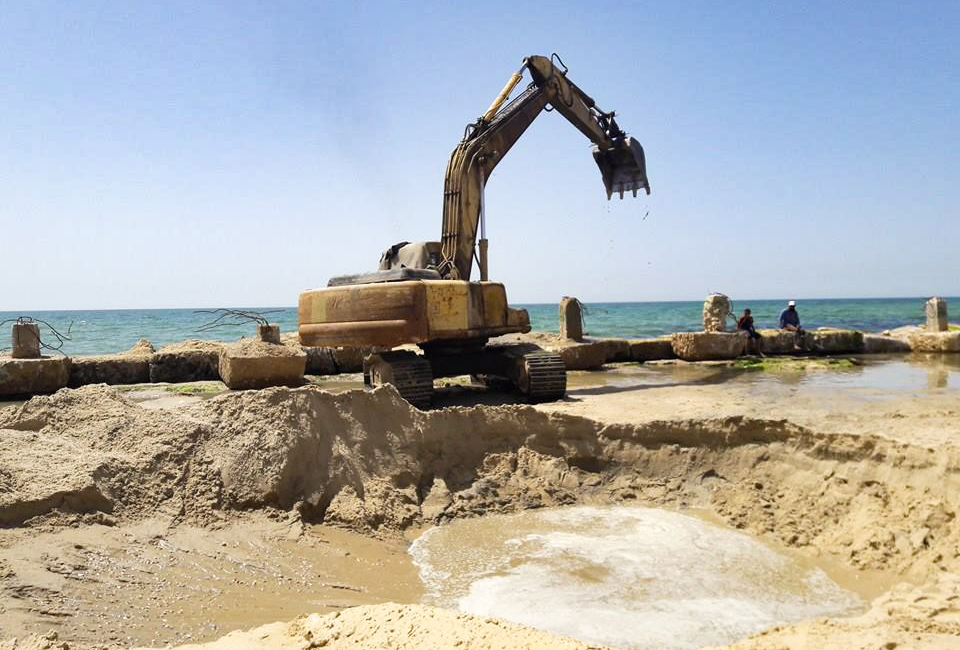
Using a digger, Amjad Tantish created a seawater pool to teach young swimmers – image by Monther Rasheed.
Simultaneously, Moghat’s school saw an uptick in students. Inspired by the dedication and determination of the two instructors, no fewer than 11 new competitive swimming clubs formed, each vying to be the best in Gaza at regular meets.
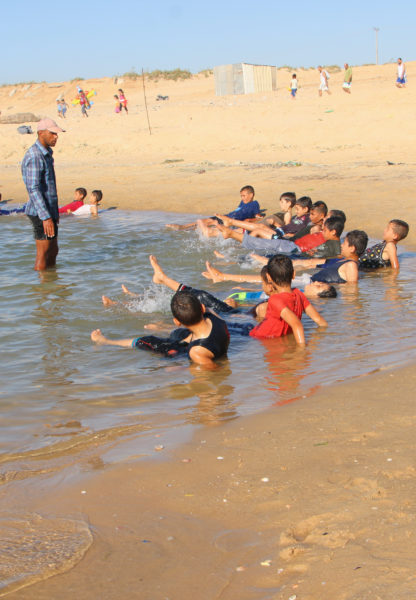
Children perfect their swimming strokes in Gaza’s seawater pool – image by Monther Rasheed..
But, tragically, open hostilities were renewed along the Israel-Gaza border in reaction to peaceful protests against the occupation. Starting in 2017, the sanctions imposed by Palestinian President Mahmoud Abbas left Gaza without electricity for up to 18 hours every day. The territory’s sewage plants were perhaps hit hardest. Unable to process the influx from Gaza’s two million residents, they had to pump sewage directly into the sea, right at the shoreline. As a result, much of Gaza’s coastline became unsafe for swimming and those who did venture out risked poisoning, as was the case with Mohammed al-Sayis, a five-year-old boy who died in July 2017 after going swimming with his brothers.
In 2018, Tantish was forced to close his inventively engineered pool as the sea became increasingly polluted. Likewise, Moghat saw his enrollment decline, as unemployment rates in Gaza reached their highest level in 20 years. Meanwhile, the Gaza Community Mental Health Programme again saw an increase in children visiting their centres.
Day-by-day, the chance to find a moment of respite in swimming is fading in the shadow of this last crisis. And with no end to the region’s recurrent hostilities in sight, it’s uncertain how Moghat and Tantish will keep up their struggle. Still, the two instructors are determined to push ahead with their mission to teach young swimmers.
With help from German NGO, Sternenstaub, Tantish has been able to construct a new pool to train Gaza’s next generation of Olympic hopefuls, complete with a solar heater that he himself installed. Despite the difficulties and against all the odds, these swimmers continue to nurture the next generation, prizing this crucial source of recreation and release in Gaza, not to mention the chance for nothing more and nothing less than a little fun.
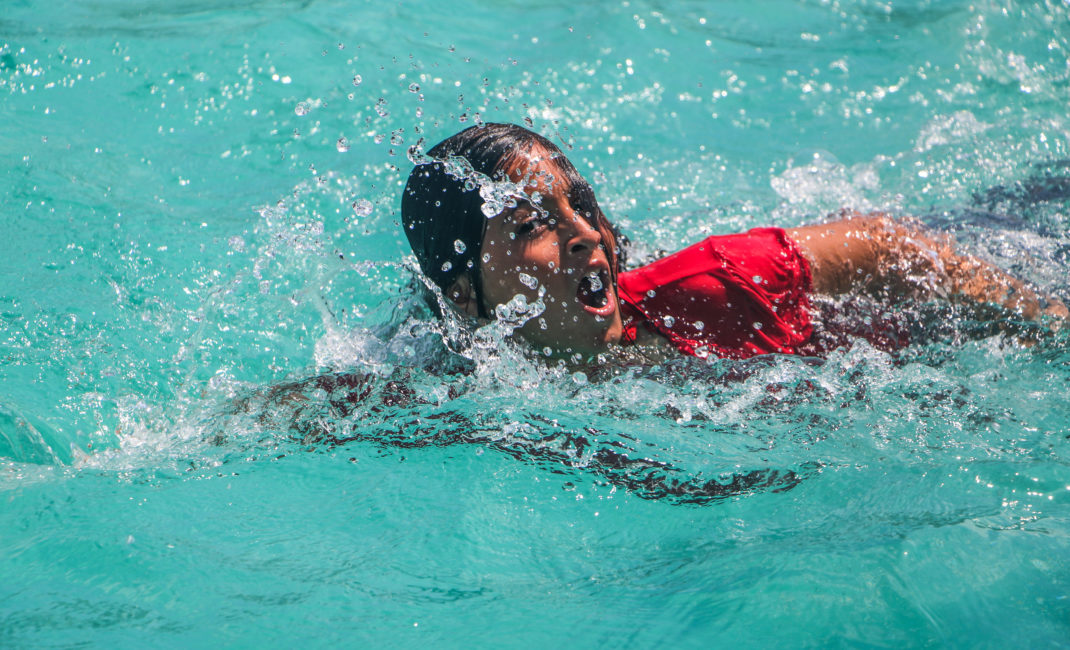
Image by Monthor Rasheed.
Main image by Monthor Rasheed.
- For stories like this direct to your inbox, subscribe here. Or follow us on Facebook, Twitter or Instagram.

